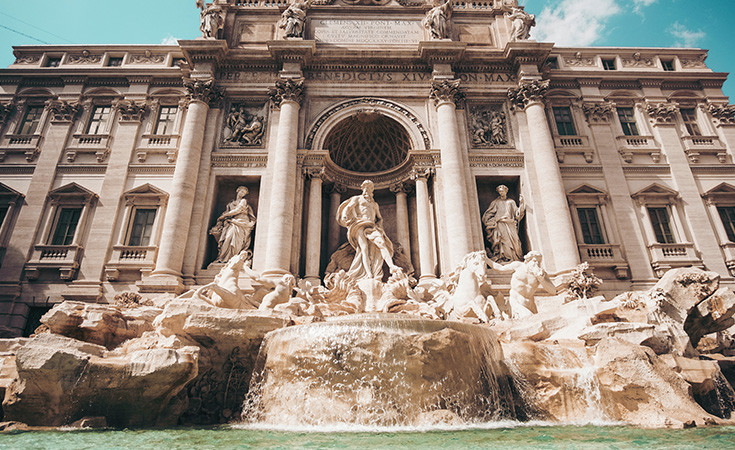
Trevi Fountain is probably the most visited touristic sight in Rome that is free of charge. Hundreds and hundreds of tourists flock to see it every day, to make a wish and throw a coin.
The Fountain Trevi is the largest fountain in the city of Rome and one of the most well-known fountains in the world. The name of the fountain was derived from the term Tre Vie (tree roads) and it marks the end of the 19-kilometer-long aqueduct called Aqua Vergine (Virgin Waters). Aqueducts were built starting from the Roman Empire in order to supply citizens with fresh water. Aqua Vergine was originally built by Marcus Agrippa in 19BC in order to supply the Baths of Agrippa with water. In this Period of Ancient Rome, the mentioned aqueduct was called Aqua Virgo from which the more modern version got its name. Even though this aqueduct was heavily damaged in the siege of Goths and Visigoths in 537, it is the only one that never stopped supplying the city with water and the oldest aqueduct of Rome that still functions.
Trevi Fountain was designed by Nicola Salvi and constructed between 1732 and 1762. It was built in the Baroque style, while the actual design of the fountain was to tell the story of the Aqua Vergine aqueduct through architecture and sculptures. The theme of the whole composition is the sea. In the center of the composition there is Oceanus, the God of all seas, situated on top of the rocky cliff as he rides carriage made of a gigantic sea shell.
(!) Try to avoid this location in order to have a drink or something to eat in nearby restaurants- they tend to have exorbitant prices. A beer can cost up to 15€ whereas just 50 meters away from the square you’ll pay less than 5€.
Ticket price for Fountain Trevi
The entrance is free of charge.
Interesting facts
-According to the legend, a young girl showed a spring with fresh drinkable water to thirsty Roman soldiers. The water of this spring was used for the Aqua Virgo aqueduct which was named after the young girl (Virgin Waters).
-The whole fountain cost 17,647 scudi, the currency of the Papal State, and the money was partially raised thanks to reintroduction of Lotto (lottery game) in Rome.
-In 1730, Nicola Salvi lost the contest for the best design of the fountain to Alessandro Galilei. However, since Galilei was from Florence and since Romans could not reconcile to that idea, Salvi’ solutions were finally accepted.
-This fountain holds 300.000 liters of water.
-For the construction of the sculptures, 175 blocks of rock with 157 metal pins were used.
-The whole structure has 24 windows; it is 32 meters high, whereas the statue of Oceano (Oceanus- God of all water) is 6m high.